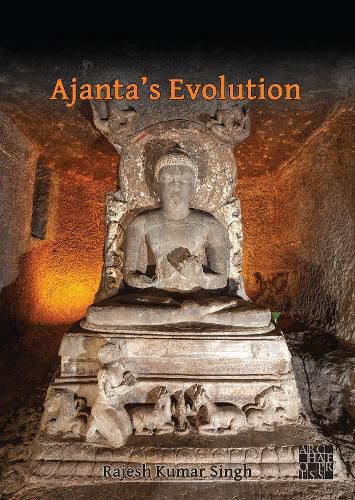Readings Newsletter
Become a Readings Member to make your shopping experience even easier.
Sign in or sign up for free!
You’re not far away from qualifying for FREE standard shipping within Australia
You’ve qualified for FREE standard shipping within Australia
The cart is loading…






Ajanta's Evolution: From Savakayana to Bodhisatvayana amid Hunnic Turmoil offers a new scholarly exploration of the rock-cut caves, their sculpture and paintings, meticulously tracing the rise, transformation, and legacy of these architectural marvels. The book takes an interdisciplinary approach, combining elements of historical, archaeological, artistic and Buddhist studies. Part I treats the grand epoch of Sravakayana, discussing archaeological contexts, cave classification methodologies, and the emergence of rock-cut monasteries under the influence of King Hari Sena. Against the backdrop of Hunnic upheaval and societal transformations, Part II delves into the Bodhisatvayana era, chronicling the impact of Alchon or Alkhan Hun raids, migrations, and the evolution of the rock-cut monuments. The principle aim is to contextualize the site of Ajanta within a new historical setting. It seeks to address the paradox of how the Early Alchon or Alkhan Hunnic invasions, despite causing significant challenges to the development of the fifth-century cave temples, also provided opportunities for innovation. Another noteworthy aspect is the introduction of a novel taxonomical approach to the monuments. A revised chart for the taxonomy and typological classification of Buddhist rock-cut monuments is presented, mapping the evolutionary trajectory of architectural development over time.
$9.00 standard shipping within Australia
FREE standard shipping within Australia for orders over $100.00
Express & International shipping calculated at checkout
Ajanta's Evolution: From Savakayana to Bodhisatvayana amid Hunnic Turmoil offers a new scholarly exploration of the rock-cut caves, their sculpture and paintings, meticulously tracing the rise, transformation, and legacy of these architectural marvels. The book takes an interdisciplinary approach, combining elements of historical, archaeological, artistic and Buddhist studies. Part I treats the grand epoch of Sravakayana, discussing archaeological contexts, cave classification methodologies, and the emergence of rock-cut monasteries under the influence of King Hari Sena. Against the backdrop of Hunnic upheaval and societal transformations, Part II delves into the Bodhisatvayana era, chronicling the impact of Alchon or Alkhan Hun raids, migrations, and the evolution of the rock-cut monuments. The principle aim is to contextualize the site of Ajanta within a new historical setting. It seeks to address the paradox of how the Early Alchon or Alkhan Hunnic invasions, despite causing significant challenges to the development of the fifth-century cave temples, also provided opportunities for innovation. Another noteworthy aspect is the introduction of a novel taxonomical approach to the monuments. A revised chart for the taxonomy and typological classification of Buddhist rock-cut monuments is presented, mapping the evolutionary trajectory of architectural development over time.